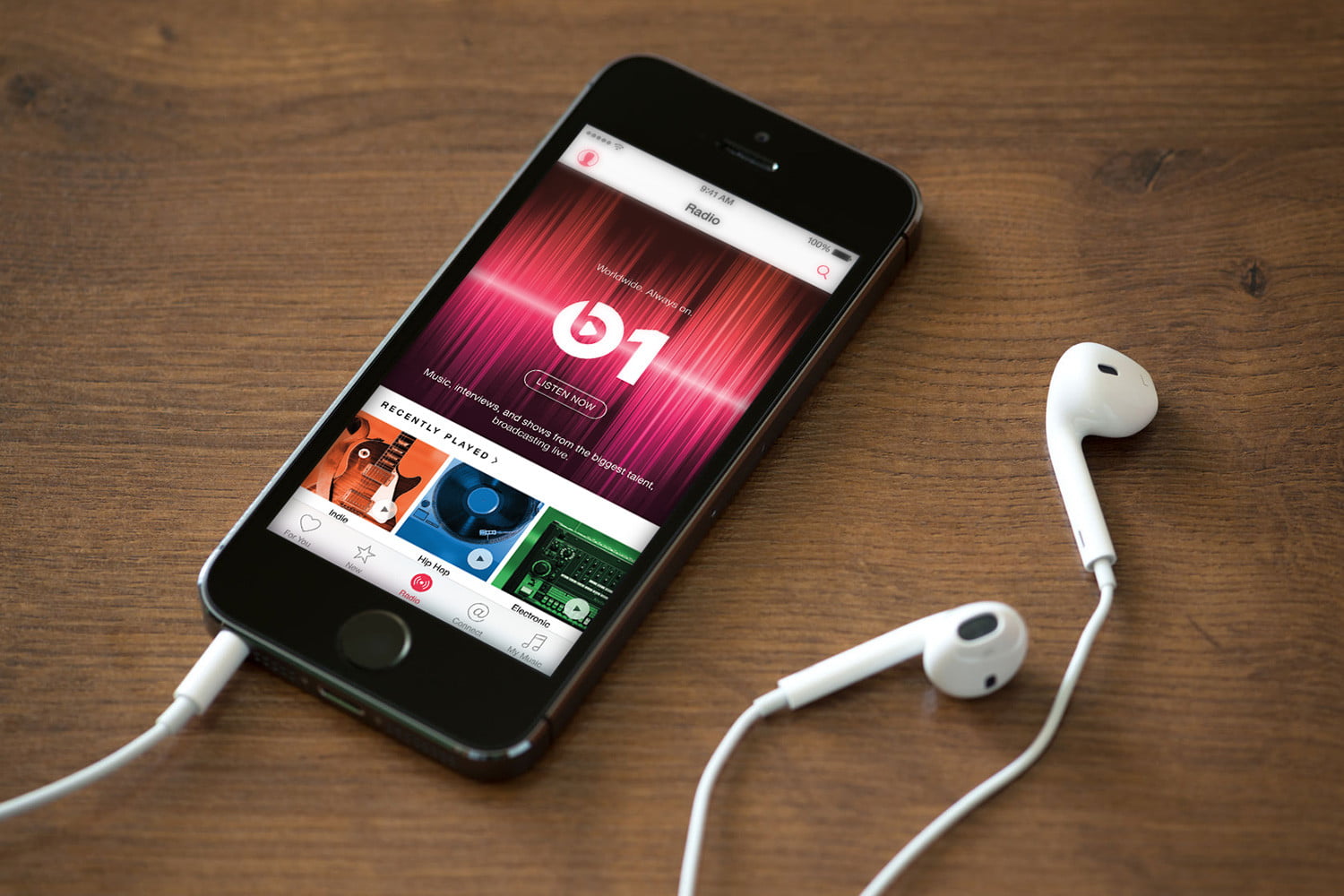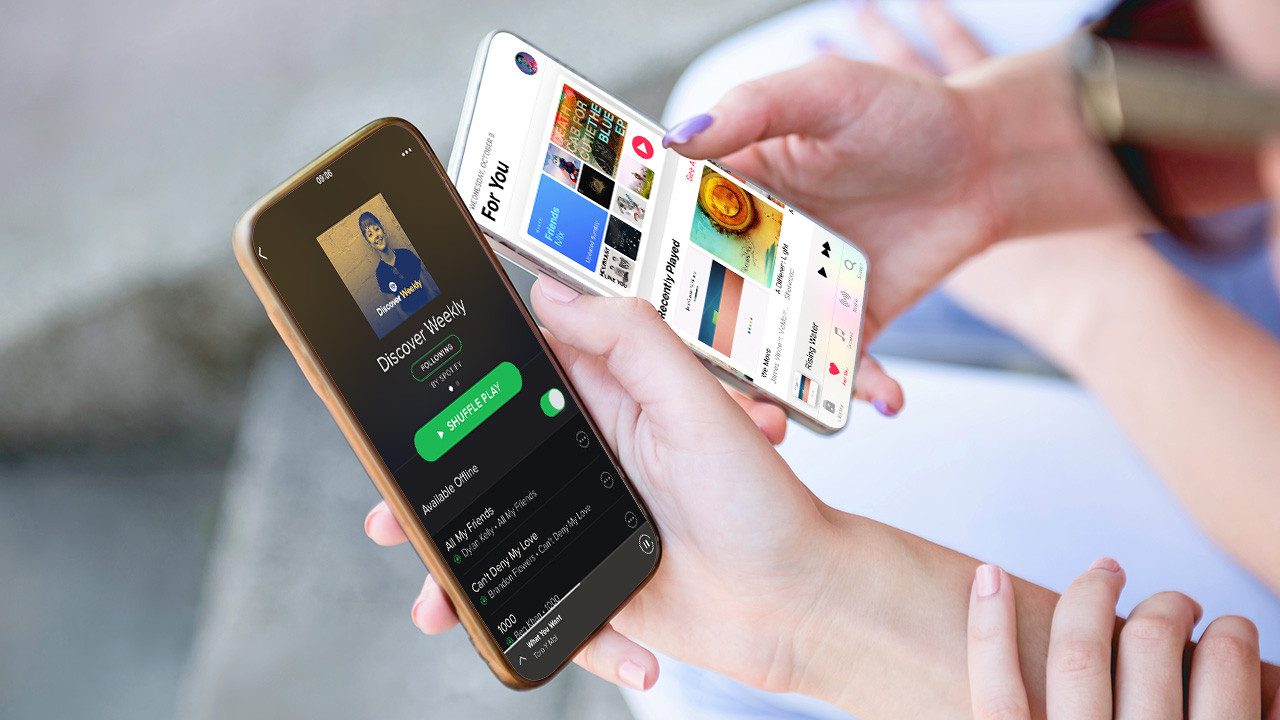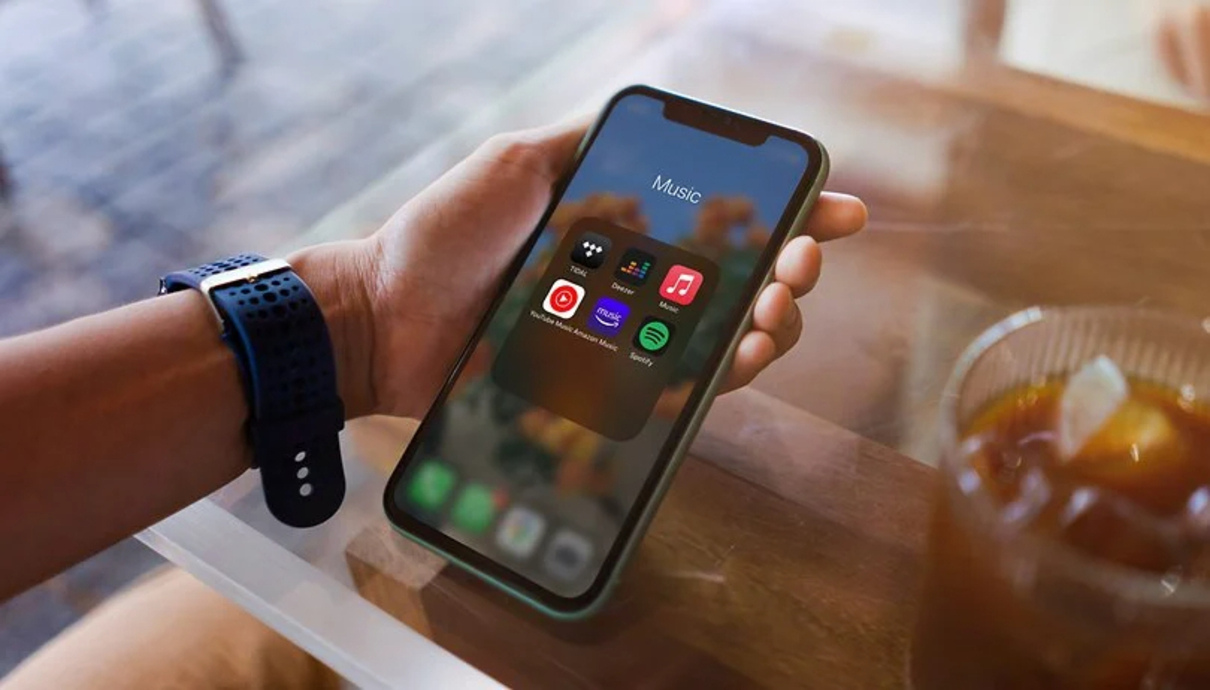Home>Devices & Equipment>Streaming>How Much Data Does Streaming Music Take Up


Streaming
How Much Data Does Streaming Music Take Up
Published: March 7, 2024
Learn how much data streaming music consumes and optimize your data usage. Find out the impact of streaming on your data plan.
(Many of the links in this article redirect to a specific reviewed product. Your purchase of these products through affiliate links helps to generate commission for AudioLover.com, at no extra cost. Learn more)
Table of Contents
Introduction
Streaming music has revolutionized the way we enjoy our favorite tunes. With the click of a button, we can access an extensive library of songs, albums, and playlists from virtually anywhere. Whether you're commuting to work, hitting the gym, or simply unwinding at home, music streaming services offer a convenient and personalized listening experience.
As streaming music continues to gain popularity, many users are curious about the amount of data consumed during their listening sessions. Understanding the data usage of streaming music is crucial for optimizing your internet plan, avoiding overage charges, and ensuring uninterrupted music enjoyment.
In this article, we will delve into the intricacies of streaming music data usage, shedding light on the factors that influence data consumption and providing insights into popular music streaming services and their respective data usage. Additionally, we will offer practical tips for managing data usage while streaming music, empowering you to make informed decisions and maximize your listening experience without exceeding your data limits.
So, if you've ever wondered how much data your favorite music streaming service consumes, or if you're looking to make the most of your data while enjoying seamless music streaming, you've come to the right place. Let's embark on a journey to unravel the mysteries of streaming music data usage and equip ourselves with the knowledge to make data-conscious choices without compromising our musical indulgence.
Understanding Streaming Music Data Usage
Streaming music data usage refers to the amount of data consumed when listening to music through online streaming services. It is essential to comprehend how streaming music impacts data usage, as this knowledge empowers users to manage their internet data effectively.
When streaming music, data usage is influenced by various factors, including the audio quality, duration of listening, and the streaming platform used. Understanding these factors is crucial for making informed decisions about data consumption while enjoying your favorite tunes.
The audio quality selected while streaming directly impacts data usage. Higher quality audio requires more data to deliver a richer and more detailed listening experience. For instance, streaming music at 320 kbps (kilobits per second), which is considered high-quality audio, consumes more data compared to streaming at 128 kbps, which is a standard quality setting on many platforms.
Moreover, the duration of music playback directly correlates with data usage. Extended listening sessions naturally result in higher data consumption. Whether you're streaming music for a few minutes or several hours, the cumulative effect on data usage should be considered, especially for users with limited data plans.
Additionally, the choice of streaming platform significantly influences data usage. Different music streaming services may employ varying compression algorithms and data delivery methods, leading to differences in data consumption. Understanding the data usage patterns of specific platforms can help users make informed choices based on their data allowances and preferences.
By gaining a comprehensive understanding of streaming music data usage, users can make conscious decisions to optimize their data consumption without compromising their listening experience. This knowledge empowers individuals to select suitable audio quality settings, manage their listening duration, and choose streaming platforms that align with their data usage preferences and limitations.
Factors Affecting Data Usage
When it comes to streaming music, several factors play a pivotal role in determining the amount of data consumed. Understanding these factors is essential for making informed decisions about data usage while enjoying your favorite tunes.
Audio Quality:
The audio quality setting selected while streaming music significantly impacts data usage. Higher quality audio, such as 320 kbps (kilobits per second), delivers a richer and more detailed listening experience but requires more data compared to lower quality settings. For instance, streaming music at 320 kbps consumes approximately 2.40 MB per minute, while streaming at 128 kbps, a standard quality setting on many platforms, uses around 0.96 MB per minute. Therefore, users with limited data plans may opt for lower quality settings to conserve data without compromising their listening experience.
Duration of Listening:
The duration of music playback directly influences data usage. Whether you're streaming music for a few minutes or several hours, the cumulative effect on data consumption should be considered. For example, a 30-minute listening session at 320 kbps consumes approximately 72 MB, while the same duration at 128 kbps uses around 28.8 MB. Being mindful of the duration of your listening sessions can help manage data usage effectively, especially for users with restricted data allowances.
Streaming Platform:
The choice of streaming platform also impacts data usage. Different music streaming services may employ varying compression algorithms and data delivery methods, leading to differences in data consumption. For instance, popular streaming platforms like Spotify, Apple Music, and Pandora may have distinct data usage patterns based on their streaming technologies and audio quality options. Users can explore the data usage characteristics of different platforms to align with their data allowances and preferences.
Network Conditions:
Network conditions, including the stability and speed of the internet connection, can influence data usage during music streaming. Unstable or slower connections may lead to buffering and rebuffering, resulting in increased data consumption. Therefore, ensuring a stable and reliable internet connection can contribute to more efficient data usage while streaming music.
By considering these factors, users can make informed choices to optimize their data consumption without compromising their music streaming experience. Whether adjusting audio quality settings, managing listening durations, or selecting suitable streaming platforms, understanding the factors affecting data usage empowers individuals to make data-conscious decisions tailored to their preferences and data allowances.
Popular Music Streaming Services and Their Data Usage
When it comes to music streaming, several popular platforms have garnered widespread acclaim for their diverse libraries, personalized recommendations, and seamless user experiences. Understanding the data usage characteristics of these platforms is essential for users to make informed decisions based on their data allowances and preferences.
Spotify
As one of the leading music streaming services globally, Spotify offers users access to a vast catalog of songs, playlists, and podcasts. In terms of data usage, Spotify provides multiple audio quality settings, including Normal (96 kbps), High (160 kbps), and Very High (320 kbps). The choice of audio quality directly impacts data consumption, with Very High quality consuming approximately 2.40 MB per minute. Users can adjust their settings based on their data plans and desired listening experience.
Apple Music
Apple Music, known for its seamless integration with Apple devices and exclusive content, also offers users control over audio quality settings. Users can choose between High Efficiency (AAC 64 kbps) and High Quality (AAC 256 kbps) options. The High Quality setting delivers a superior listening experience but consumes more data compared to the High Efficiency option. Understanding these settings enables users to tailor their data usage according to their preferences.
Pandora
Pandora, renowned for its personalized radio stations and music discovery features, provides users with audio quality options, including Standard (64 kbps) and High (192 kbps). The choice of audio quality directly influences data consumption, with High quality streaming consuming more data per minute. By being aware of these options, users can manage their data usage while enjoying Pandora's curated listening experiences.
Amazon Music
Amazon Music offers a diverse range of music streaming options, including Amazon Music Unlimited and Amazon Prime Music. Users can select their preferred audio quality settings, such as Low (48 kbps), Medium (128 kbps), and High (256 kbps). The High quality setting delivers a richer audio experience but consumes more data, making it essential for users to align their settings with their data allowances and listening preferences.
YouTube Music
YouTube Music, known for its extensive music video library and personalized recommendations, allows users to adjust their streaming quality settings. The platform offers options such as Audio Only (128 kbps), Low (48 kbps), Normal (128 kbps), and High (256 kbps). Understanding the data usage implications of these settings empowers users to make informed choices while streaming music and videos on the platform.
By gaining insights into the data usage characteristics of these popular music streaming services, users can make informed decisions to optimize their data consumption without compromising their listening experiences. Whether adjusting audio quality settings, managing listening durations, or exploring diverse platforms, understanding the data usage nuances enables individuals to tailor their music streaming experiences according to their data allowances and preferences.
Tips for Managing Data Usage while Streaming Music
Managing data usage while streaming music is essential for optimizing your listening experience without exceeding your data limits. By implementing practical strategies and leveraging the features offered by music streaming platforms, you can effectively manage your data consumption. Here are some valuable tips to help you make the most of your data while enjoying seamless music streaming:
1. Adjust Audio Quality Settings:
Most music streaming services offer control over audio quality settings, allowing users to choose between different bitrates or quality levels. By selecting lower quality settings, such as 128 kbps or 64 kbps, you can significantly reduce data consumption without compromising the overall listening experience. Consider adjusting the audio quality based on your preferences and data allowances to conserve data while streaming music.
2. Download Music for Offline Listening:
Many music streaming platforms enable users to download songs, albums, or playlists for offline listening. By downloading content over Wi-Fi and accessing it offline, you can enjoy your favorite music without consuming additional data. This feature is particularly useful for users with limited data plans or those in areas with unstable internet connectivity.
3. Monitor Data Usage:
Keep track of your data usage while streaming music by leveraging built-in data monitoring tools provided by your mobile network or using third-party apps. By staying informed about your data consumption patterns, you can make informed decisions about your streaming habits and adjust settings accordingly to stay within your data limits.
4. Utilize Data-Saving Modes:
Some music streaming services offer data-saving modes or settings designed to minimize data usage without compromising audio quality. Explore these options within the app settings to enable data-saving features, which may include optimized streaming algorithms and reduced bitrate streaming, allowing you to conserve data while enjoying your favorite tunes.
5. Limit Streaming Quality on Cellular Networks:
If you frequently stream music using cellular data, consider setting a limit on streaming quality specifically for mobile networks. By choosing a lower quality setting for cellular streaming, you can effectively manage data usage and avoid excessive consumption when not connected to Wi-Fi.
6. Explore Offline Playback Options:
Certain music streaming platforms allow users to pre-load content for offline playback during specific times, such as overnight or during off-peak hours. By scheduling offline playback, you can take advantage of off-peak data allowances or Wi-Fi connectivity to download music for later consumption, reducing the impact on your regular data usage.
By implementing these tips and leveraging the data management features offered by music streaming services, you can optimize your data consumption while enjoying uninterrupted music streaming. Whether adjusting audio quality settings, utilizing offline playback options, or monitoring data usage, these strategies empower you to make informed decisions and maximize your music streaming experience within your data limits.
Conclusion
In conclusion, understanding the intricacies of streaming music data usage is paramount for users seeking to strike a balance between indulging in their favorite tunes and managing their data consumption effectively. By delving into the factors that influence data usage, exploring the data consumption patterns of popular music streaming services, and implementing practical tips for data management, individuals can navigate the world of music streaming with confidence and mindfulness.
The audio quality settings, duration of listening sessions, choice of streaming platform, and network conditions all play pivotal roles in determining the amount of data consumed while streaming music. By being cognizant of these factors, users can make informed decisions tailored to their data allowances and listening preferences. Whether opting for lower audio quality settings, monitoring their listening durations, or leveraging data-saving modes, individuals can optimize their data usage without compromising their music streaming experiences.
Furthermore, gaining insights into the data usage characteristics of popular music streaming services such as Spotify, Apple Music, Pandora, Amazon Music, and YouTube Music empowers users to align their preferences with their data allowances. By understanding the audio quality options and data consumption implications offered by these platforms, individuals can make conscious choices to tailor their music streaming experiences according to their data limits.
The practical tips for managing data usage while streaming music provide actionable strategies for users to make the most of their data allowances. From adjusting audio quality settings and utilizing offline playback options to monitoring data usage and limiting streaming quality on cellular networks, these tips enable individuals to optimize their data consumption without compromising their enjoyment of music.
In essence, the journey to unravel the mysteries of streaming music data usage equips users with the knowledge and tools to make data-conscious choices. By embracing a mindful approach to data management while streaming music, individuals can savor their favorite melodies, discover new artists, and curate personalized playlists while staying within their data limits. This harmonious balance ensures that the joy of music remains uninterrupted, complemented by efficient data usage practices.
As the landscape of music streaming continues to evolve, the ability to navigate data usage effectively empowers users to embrace the endless possibilities of music while maintaining control over their data consumption. With a deeper understanding of streaming music data usage and the implementation of practical strategies, individuals can embark on a seamless and data-conscious music streaming journey, where the rhythm of their favorite tunes harmonizes with mindful data management.











